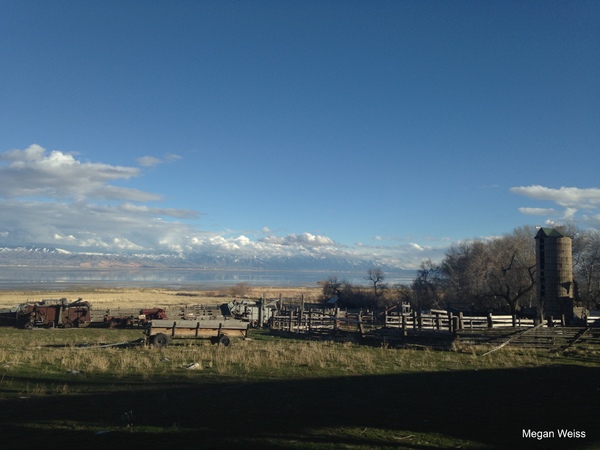Dublin Core
Title
Description
If you were stranded alone on a deserted island, what’s one thing you would take with you? Smart people will say “a few gallons of water,” because even when you’re surrounded by it, the salty water of the ocean isn’t great for drinking. The same holds true for the isolated desert island right here in Utah – Antelope Island. From ancient archaeological sites to 19th century Mormon ranches, humans have long settled this island surrounded by water, yet desperate for access to it. Surprisingly, Antelope Island has always been brimming with life and precious resources.
Located on the south end of Great Salt Lake, Antelope Island was named by explorer John C. Fremont for its pronghorn antelope population that fed him and his men when he mapped the lake in 1845. The Western Shoshone peoples who visited the island for generations before Fremont did call it Pari-bi-na, meaning “elk breeding place.”
We have archaeological evidence that prehistoric predecessors to the Shoshone have been visiting the island since the Holocene period. One projectile point found at Mushroom Springs, a valuable source of freshwater, dated back 10,000 years! And at nearby Headbanger Cave, archaeologists found bison bone and evidence of meat processing from 3,300 years ago. In this remote desert island, Indigenous people processed sheep and pronghorn into valuable materials such as dried meat and grease before returning to their communities.
When Mormon colonists arrived in Utah in the mid-1800s, they followed the freshwater resources on Antelope Island just like Indigenous peoples did. In 1849, a Mormon convert from Virginia named Fielding Garr built a ranch on the island right by Mushroom Springs. Using all the precious freshwater he could, Garr raised cattle that helped finance the LDS Church’s Perpetual Emigration Company, which paid for more than 100,000 people to relocate to Utah.
From the cattle that grazed its pastures to the pronghorn hunted by people for food, Antelope Island is full of life made possible by water. Precious springs and human ingenuity made it an important stopping point in a surprisingly desolate landscape.
Creator
Source
_______________
See Ronald J. Rood, Kevin T. Jones, and Adam Webb, 1999 Archaeological Test Excavations at Headbanger Cave, 42Dv78. Antelope Island State Park. On file, Division of State History Antiquities, Salt Lake City; “Fielding Garr Ranch,” National Register of Historic Places Inventory Nomination Form, 1982, accessed July 2022; Utah State Parks, “Chronology of Antelope Island,” Antelope Island State Park, accessed July 2022; American West Center, “Native Places Atlas,” accessed July 2022.

